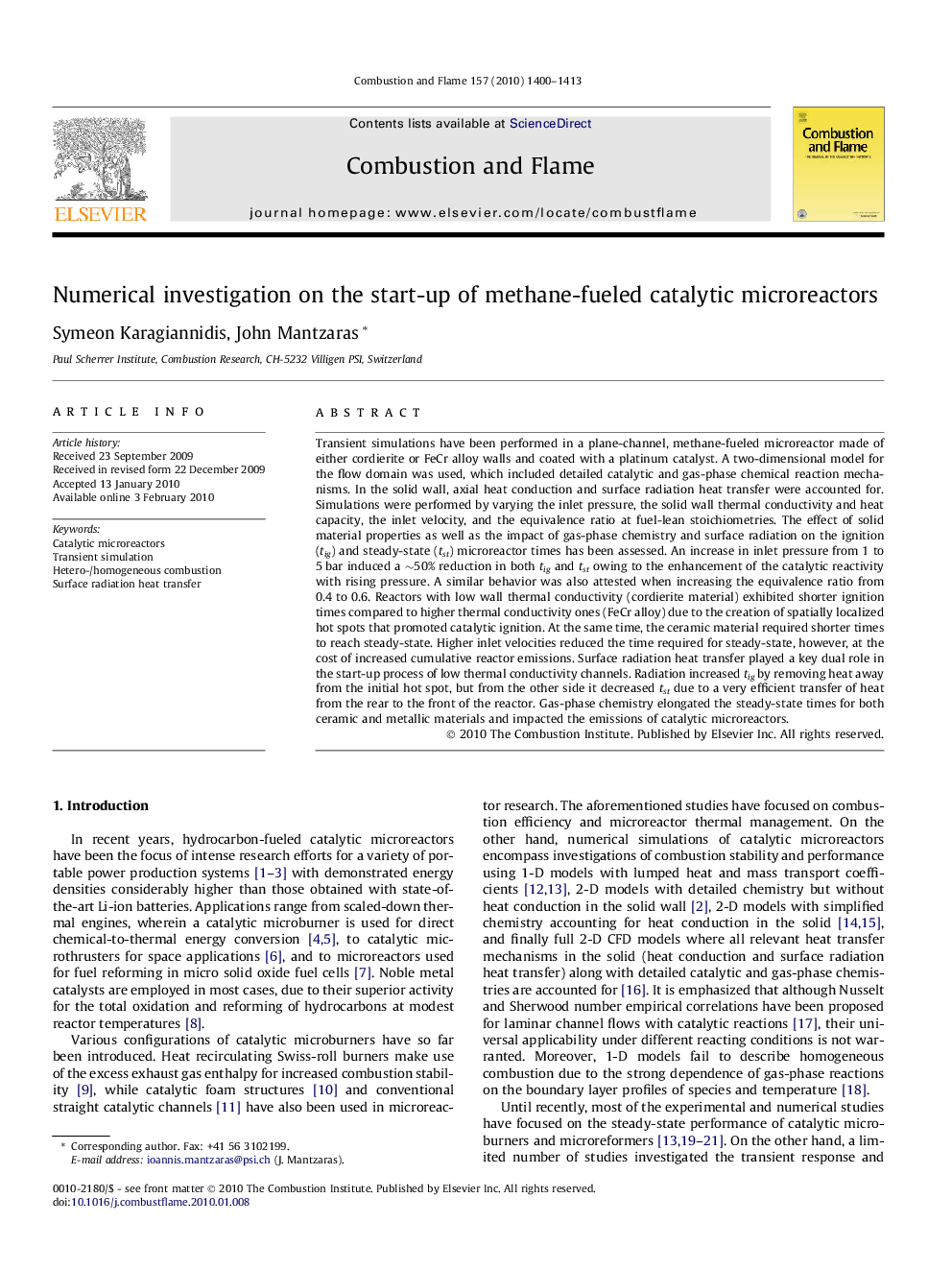| کد مقاله | کد نشریه | سال انتشار | مقاله انگلیسی | نسخه تمام متن |
|---|---|---|---|---|
| 169410 | 458000 | 2010 | 14 صفحه PDF | دانلود رایگان |

Transient simulations have been performed in a plane-channel, methane-fueled microreactor made of either cordierite or FeCr alloy walls and coated with a platinum catalyst. A two-dimensional model for the flow domain was used, which included detailed catalytic and gas-phase chemical reaction mechanisms. In the solid wall, axial heat conduction and surface radiation heat transfer were accounted for. Simulations were performed by varying the inlet pressure, the solid wall thermal conductivity and heat capacity, the inlet velocity, and the equivalence ratio at fuel-lean stoichiometries. The effect of solid material properties as well as the impact of gas-phase chemistry and surface radiation on the ignition (tig) and steady-state (tst) microreactor times has been assessed. An increase in inlet pressure from 1 to 5 bar induced a ∼50% reduction in both tig and tst owing to the enhancement of the catalytic reactivity with rising pressure. A similar behavior was also attested when increasing the equivalence ratio from 0.4 to 0.6. Reactors with low wall thermal conductivity (cordierite material) exhibited shorter ignition times compared to higher thermal conductivity ones (FeCr alloy) due to the creation of spatially localized hot spots that promoted catalytic ignition. At the same time, the ceramic material required shorter times to reach steady-state. Higher inlet velocities reduced the time required for steady-state, however, at the cost of increased cumulative reactor emissions. Surface radiation heat transfer played a key dual role in the start-up process of low thermal conductivity channels. Radiation increased tig by removing heat away from the initial hot spot, but from the other side it decreased tst due to a very efficient transfer of heat from the rear to the front of the reactor. Gas-phase chemistry elongated the steady-state times for both ceramic and metallic materials and impacted the emissions of catalytic microreactors.
Journal: Combustion and Flame - Volume 157, Issue 7, July 2010, Pages 1400–1413